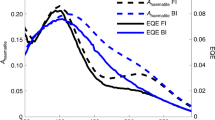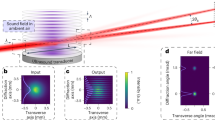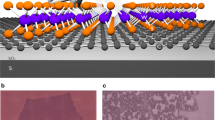Abstract
ABOUT ten years ago Stewart Paterson1 illustrated by means of several wave-speed photographs the previously discovered2 fact that a large part of the light from a detonating charge was due to the system of shock waves produced in the surrounding air. Further, he showed that the light still reaching the camera when light from these shock waves was eliminated did not arise from chemical reaction of the explosive. He accomplished this by observing the light from a water-surrounded high-explosive charge which included in its length short sections of granular sodium chloride kept dry by a thin plastic tube. The explosive parts of the charge gave very faint wave-traces, but the salt layers gave very intense bursts of light as the disturbance passed through them. Additional photographs showed that a similar brilliant light was produced by explosives when in a granular loose-pressed form.
This is a preview of subscription content, access via your institution
Access options
Subscribe to this journal
Receive 51 print issues and online access
$199.00 per year
only $3.90 per issue
Buy this article
- Purchase on SpringerLink
- Instant access to full article PDF
Prices may be subject to local taxes which are calculated during checkout
Similar content being viewed by others
References
Paterson, S., Nature, 167, 479 (1951).
Muraour, Chim. et Indust., 47, 3 (1942).
Author information
Authors and Affiliations
Rights and permissions
About this article
Cite this article
BLACKBURN, J., SEELY, L. Source of the Light recorded in Photographs of Shocked Granular Pressings. Nature 194, 370–371 (1962). https://doi.org/10.1038/194370a0
Issue date:
DOI: https://doi.org/10.1038/194370a0
This article is cited by
-
Determination of brightness temperatures with emergence of a shock wave from powder onto the boundary with a transparent barrier
Combustion, Explosion, and Shock Waves (1987)
-
Potential of shock-wave methods for preparing and compacting rapidly quenched materials
Combustion, Explosion, and Shock Waves (1985)
-
Effect of nonequilibrium heating on the behavior of a porous material in shock compression
Journal of Applied Mechanics and Technical Physics (1984)
-
Local heating of a material in the vicinity of a pore upon its collapse
Journal of Applied Mechanics and Technical Physics (1984)
-
Initiation of shock-wave detonation of hexogen mixtures with liquid fillers
Combustion, Explosion, and Shock Waves (1975)



